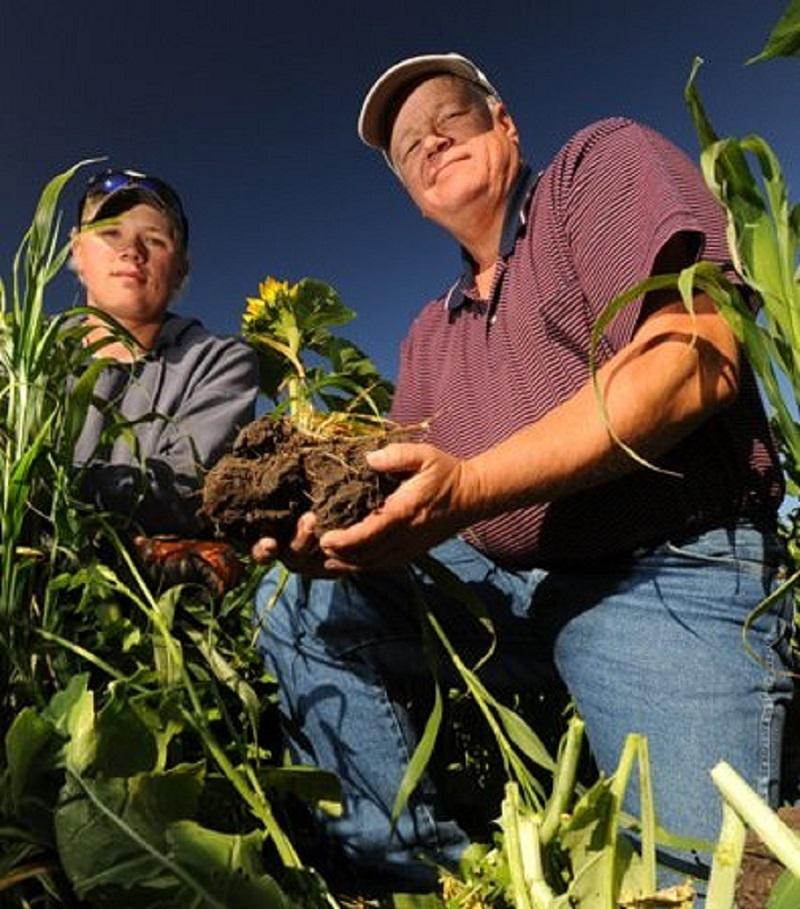HPPR: Our Turn At This Earth: ‘I Grow Things,’ A Visit With Gabe Brown
by Julene Bair | July 12, 2018
I love the wide-open, top-of-the-world feeling I get whenever I’m on the Great Plains. Last month, I was able to relish that feeling once again. After flying into Bismarck, North Dakota, I drove out to Gabe Brown’s 5,000-acre ranch and farm. Gabe showed me to a chair on the porch of a one-room cabin he’d built for meetings with visitors. A prominent leader in the Soil Health movement, he told me that a group or an individual comes by almost every day to learn about his regenerative farming and grazing techniques. “So tell me what you’re interested in,” he said. I told him that until my family sold our western Kansas irrigated farm in 2006, we had done our part in depleting the Ogallala Aquifer, the largest source of groundwater in this country. That farm and others like it were continuing to drain the aquifer, which seemed wrong to me. For a long time, I’d been looking for some positive news to share about how the aquifer could be saved. And then, online, I’d come across contrasting pictures of what happened in Gabe’s and a neighbor’s field after a freak 13-inch rainstorm in 2009. The neighbor’s field had turned into a lake, while all of that rain had just soaked into Gabe’s soil. “That’s when a light went off in my head,” I told him. “If our soil had held water like that, we may never have drilled our first well.” “Yep,” Gabe said. “The amount of rain you get is irrelevant. What’s important is how much moisture can penetrate your soil and how much your soil can hold due to organic matter and biology.” By “biology” he meant the millions of organisms that live in the soil, many invisible to the naked eye. According to a USDA bulletin, an acre of healthy soil contains anywhere from 2,500 to more than 5,000 pounds of these organisms. Tillage destroys much of that life, as does failing to feed it through the root systems of living plants, and with the organic matter that plants leave behind. That’s why Soil Health advocates like Gabe never till their fields, and why they grow cover crops—to nurture that complex life system belowground so that it can feed and hydrate their cash crops. Gabe said, “People ask, ‘Why is your place different?’ I grow things! My neighbors, they’re only growing things for ninety or a hundred days of the year.” “I can just hear my dad now,” I said. “‘Cover crops won’t work in our dry old country. They’ll suck up all the moisture you need to grow your crop.’” “That’s not how nature functions,” Gabe said. Over the next couple of hours, he drove me around his farm, showing me how it did function. I’ll share more of what I learned next week.

